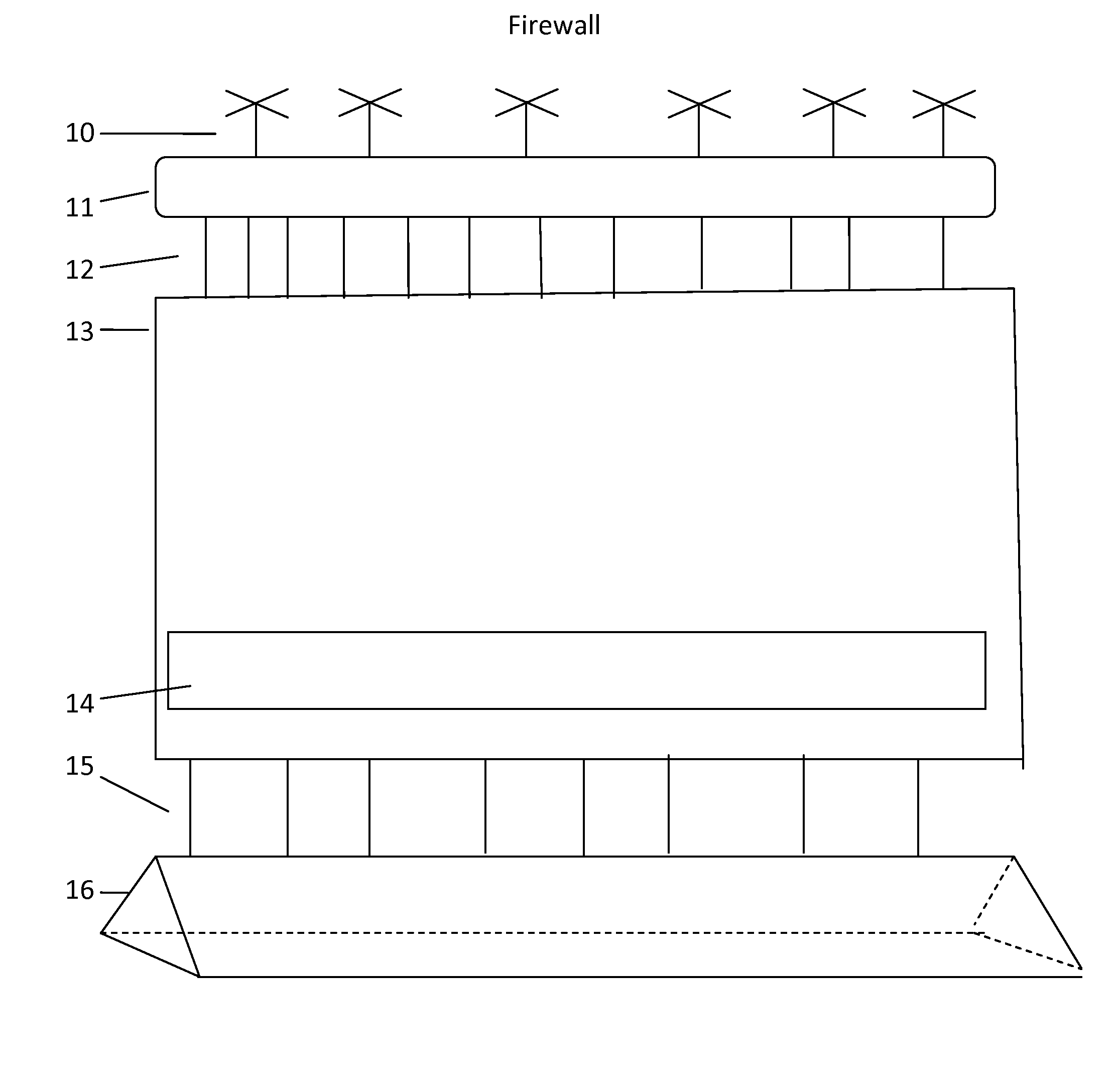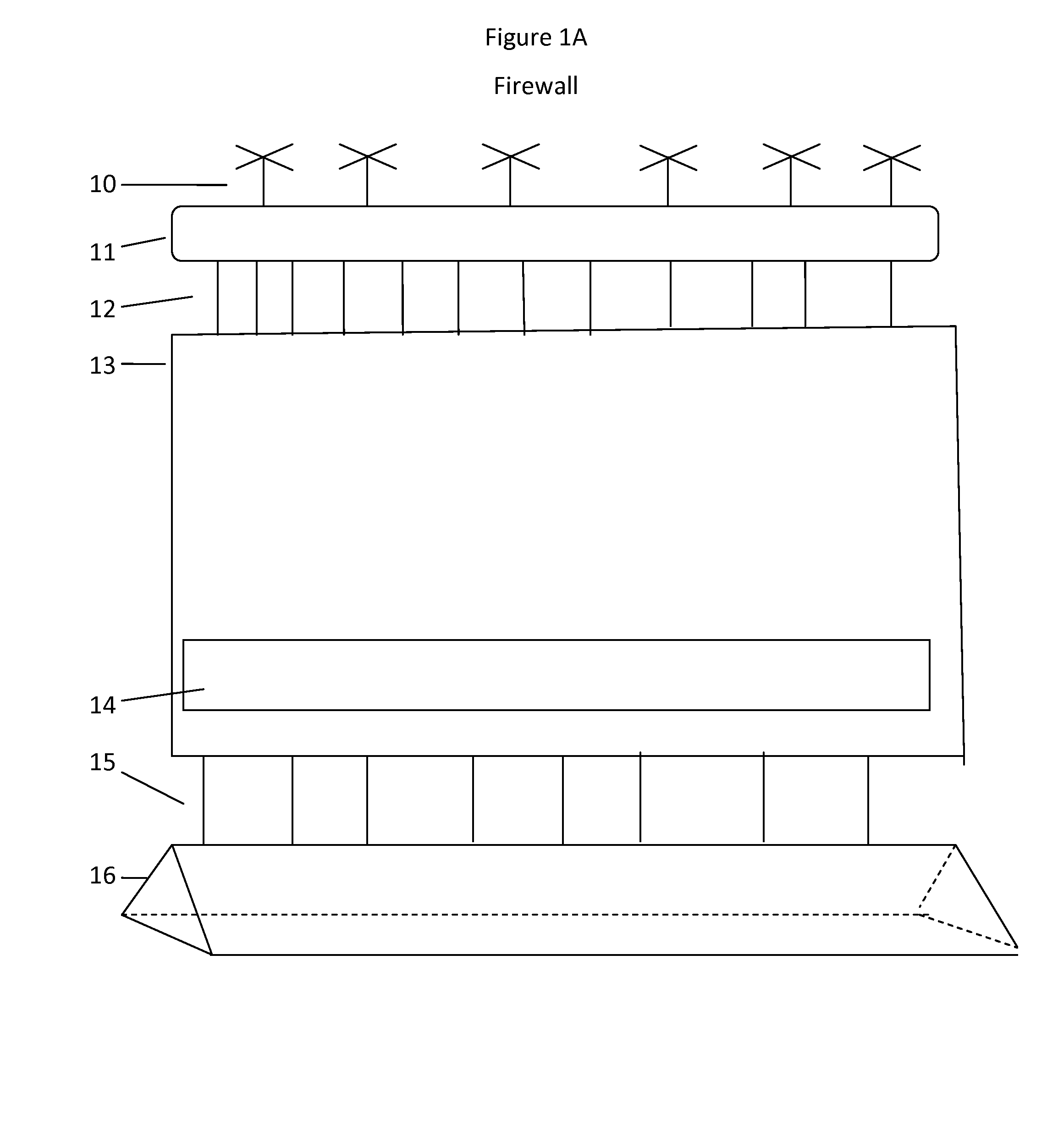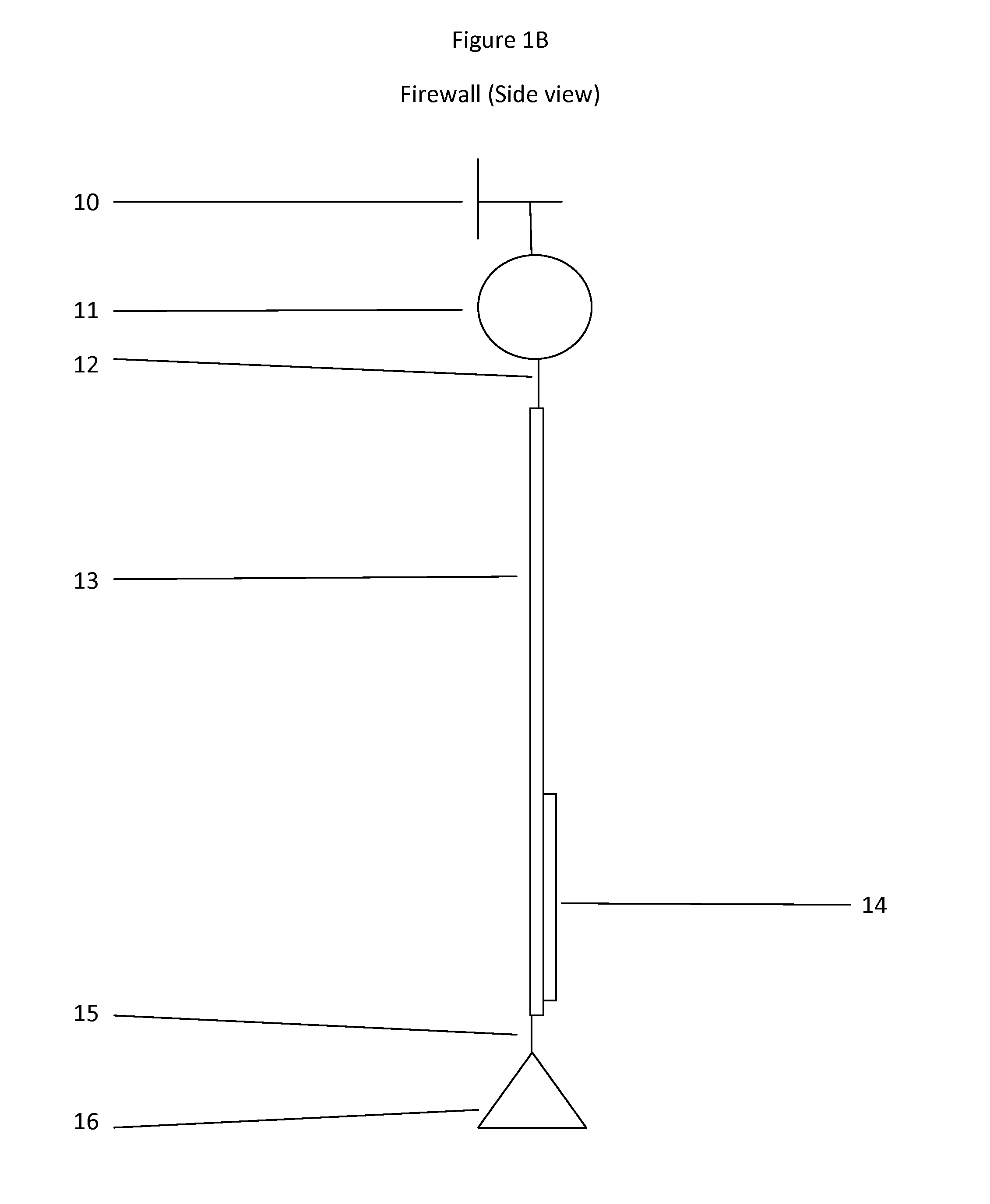Wild fire and structure fire containment and barrier system
a fire containment and barrier technology, applied in fire rescue, medical science, dental surgery, etc., to achieve the effect of extending the fire-resistant barrier higher and wider, easy to transport, set up, move and tear down, and not labor or time-consuming
- Summary
- Abstract
- Description
- Claims
- Application Information
AI Technical Summary
Benefits of technology
Problems solved by technology
Method used
Image
Examples
first embodiment
Operation of First Embodiment
[0108]The purpose of the embodiment is to contain a wildfire or a structure fire. It creates a wall to block the spread of the fire, the cinders, the embers produced by the fire, and the heat produced by the fire. The embodiment height exceeds the height of the flames so that it can block the cinders, embers, and heat that are pushed above the flames.
[0109]The Firewall is deployed along a control line that has been cleared of fuel down to mineral soil. This is so that a fire cannot run under said Base or Anchor (16) of the Firewall. When a crew of operators brings a Firewall to a control line site, the deflated Balloon (11)(21), Seams or Connectors (12)(15), and Mesh Sheet (13) are folded and tied to the Base or Anchor (16) to form a transportable package. Said Base or Anchor (16) is pre-filled or filled on site with a heavy and fire resistant material such as, for example, sand. The folded and tied package is laid out along the control line. The package...
second embodiment
Operation of Second Embodiment
[0113]Said Propellants (10), either propellers or jets, create an air stream over said Balloons (21). Said aerodynamically shaped Balloons (21) act like airplane wings and the air stream over and under them provides additional lift to the entire structure. Said aerodynamic Balloons (21) also enhance said Propellants' (10) ability to pull said Balloons (21) and the top edge of said Mesh Sheet (13) forward.
FIGS. 3A and 3B
Detailed Description of Third Embodiment
[0114]This embodiment shows a Lip and Channel system. Each Mesh Sheet (13) will have a Lip (32) on one side edge and a Channel (31) on the opposite side edge. Said Lip (32) and Channel (31) material is fire resistant to a temperature that exceeds the temperatures found in a wildland fire or structural fire. Said Lip (32) and Channel (31) are made of light weight material, a lighter-than-air material if possible. Said Lip (32) is sized and designed to fit loosely, but securely, into said Channel (31)...
third embodiment
Operation of Third Embodiment
[0115]Firewalls can be connected by threading said Lip (32) of one Mesh Sheet (13) through said Channel (31) of an adjacent Mesh Sheet (13). Thus, Firewalls can be seamlessly added onto each other. This constitutes a means to extend the Firewall along the fire control line.
[0116]In implementation, one embodiment will already be raised and deployed. To add a second embodiment, said Lip (32) of the second embodiment, which is still at ground level, is threaded into said Channel (31) of the deployed embodiment. Then, as the second embodiment is raised, said Lip (32) of the second Firewall threads up through said Channel (31) of the first deployed embodiment. Said Lip (32) in said Channel (31) has to be loose enough so that it does not bind or snag in said Channel (31), but said Channel (31) must overlap said Lip (32) enough so that said Lip (32) does not slip out of said Channel (31). Said Channel (31) on an embodiment extends to within about a foot of the ...
PUM
 Login to View More
Login to View More Abstract
Description
Claims
Application Information
 Login to View More
Login to View More - R&D
- Intellectual Property
- Life Sciences
- Materials
- Tech Scout
- Unparalleled Data Quality
- Higher Quality Content
- 60% Fewer Hallucinations
Browse by: Latest US Patents, China's latest patents, Technical Efficacy Thesaurus, Application Domain, Technology Topic, Popular Technical Reports.
© 2025 PatSnap. All rights reserved.Legal|Privacy policy|Modern Slavery Act Transparency Statement|Sitemap|About US| Contact US: help@patsnap.com



